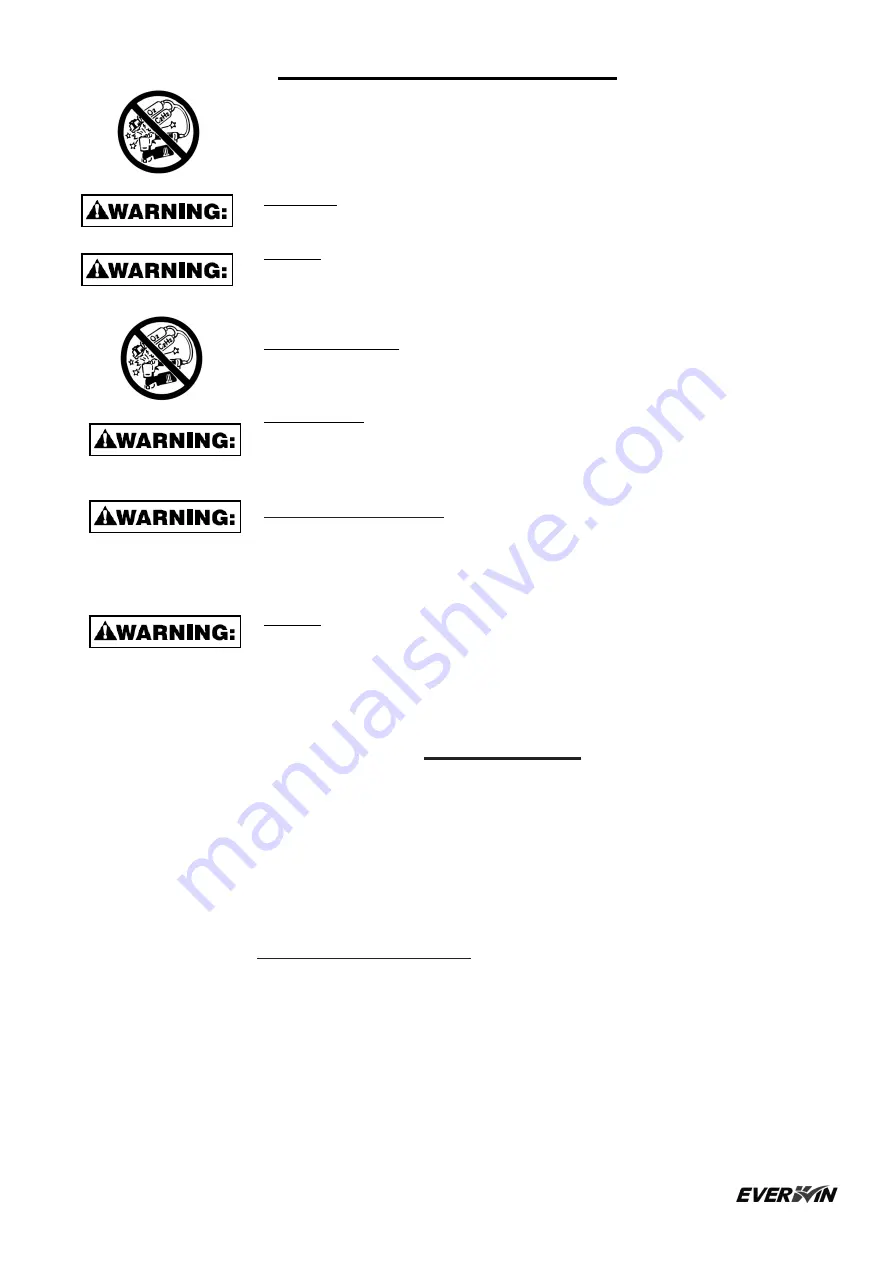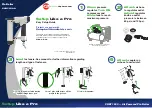
8
AIR SUPPLY AND CONNECTIONS
DO NOT USE OXYGEN, COMBUSTIBLE GASES, OR BOTTLED GASES AS A
POWER SOURCE FOR THIS TOOL AS TOOL MAY EXPLODE, POSSIBLY
CAUSING INJURY.
FITTINGS:
Install a male plug on the tool which is free flowing and which will
release air pressure from the tool when disconnected from the supply source.
HOSES:
Air hoses should have a minimum of 150 PSI (10.6 kg/cm
2
) working
pressure rating or 150 percent of the maximum pressure that could be produced in
the air system. The supply hose should contain a fitting that will provide “quick
disconnecting” from the male plug on the tool.
SUPPLY SOURCE:
Use only clean, regulated compressed air as a power source for
this tool. NEVER USE OXYGEN, COMBUSTIBLE GASES, OR BOTTLED GASES AS
A POWER SOURCE FOR THIS TOOL AS TOOL MAY EXPLODE.
REGULATOR:
A pressure regulator with an operating pressure of 0 - 125 PSI. (0 -
8.79 kg/cm
2
) is required to control the operating pressure for safe operation of this
tool. Do not connect this tool to air pressure which can potentially exceed 200 PSI.
(14 kg/cm
2
) as tool may fracture or burst, possibly causing injury.
OPERATING PRESSURE:
Do not exceed recommended maximum operating
pressure as tool wear will be greatly increased. The air supply must be capable of
maintaining the operating pressure at the tool. Pressure drops in the air supply can
reduce the tool’s driving power. Refer to “TOOL SPECIFICATIONS” for setting the
correct operating pressure for the tool.
FILTER:
Dirt and water in the air supply are major causes of wear in pneumatic
tools. A filter will help to get the best performance and minimum wear from the tool.
The filter must have adequate flow capacity for the specific installation. The filter
has to be kept clean to be effective in providing clean compressed air to the tool.
Consult the manufacturer’s instructions on proper maintenance of your filter. A dirty
and/or clogged filter will cause a pressure drop which will reduce the tool’s
performance.
LUBRICATION
Frequent, but not excessive, lubrication is required for best performance.
Air-tool oil added through the air line connection will lubricate the internal parts. Do
not use detergent oil or additives as these lubricants will cause accelerated wear to
the seals and bumpers in the tool, resulting in poor tool performance and frequent
tool maintenance.
If no air line lubricator is used, add oil during use into the air fitting on the tool once
or twice a day. Only a few drops of oil at a time is necessary. Too much oil will only
collect inside the tool and will be noticeable in the exhaust cycle.
COLD WEATHER OPERATION
CAUTION:
NOTE:
For cold weather operation, near and below freezing, the moisture in the air line may
freeze and prevent tool operation. We recommend the use of permanent antifreeze
(ethylene glycol) as a cold weather lubricant.
Do not store tools in a cold-weather environment to prevent frost or ice
formation on the tools operating valves and mechanisms, which could cause
tool failure. Test tool without fasteners prior to operations to ensure no
malfunction on the tool due to ice formation.
Some commercial air line drying liquids are harmful to O-Rings and seals – do
not use these low temperature air dryers without checking compatibility.






























